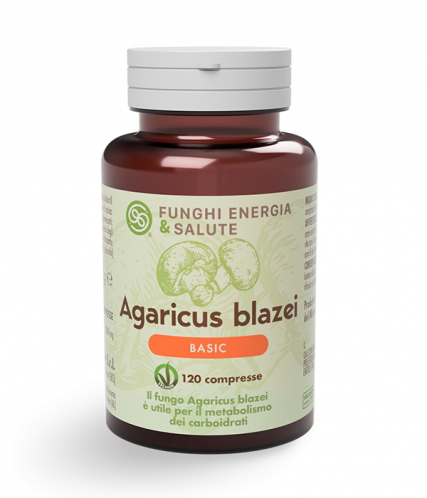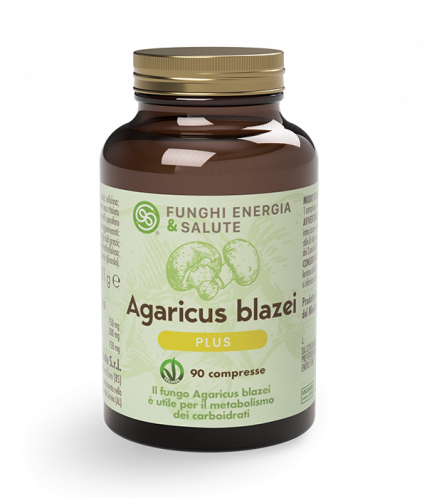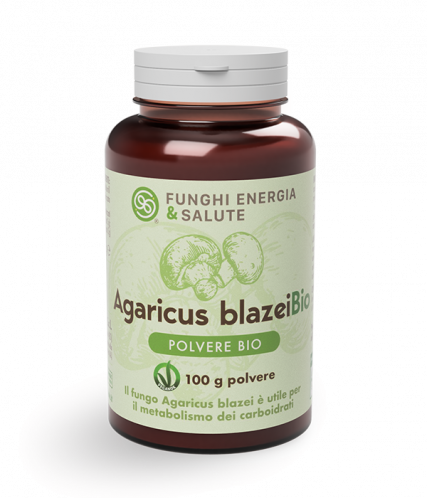Certified Natural products veganOK
030 9881073 Monday to Friday from 09:00 to 17:30
Toggle Nav 



Skip to Content
Language
EN
How can we help you?
Search
Subscribe to the Newsletter
to get immediately a discount code
on your first purchase
to get immediately a discount code
on your first purchase
Agaricus blazei
- Home
- Agaricus blazei
agaricus blazei
In modern times
Two studies performed at the University of Oslo have confirmed that the use of Agaricus (Agaricus blazei Murril) strengthens the immune system e and helps the body fight bacteria in the urinary and respiratory tracts effectively (Bernardshaw et al., 2005).
The potential of this Medicinal Mushroom makes it particularly suitable for allergies, both in prevention and in treatment (Ellertsen and Hetland, 2009), as has been confirmed by an important Japanese study (Morimoto et al., 2008).
This Medicinal Mushroom also provides significant help in controlling the appetite and encouraging weight loss if associated with a correct diet (Hsu et al., 2008). Furthermore, Agaricus visibly improves the appearance of the skin (Hyde et al., 2010; Halpern, 2007), increases psychophysical energy and supports the nervous system and mind in the critical stages of illnesses (Zhang et al., 2015).
Ancient tradition
Agaricus began to attract the interest of scientists as of 1960. Dr. W.J. Cinden and his team of researchers from Pennsylvania State University found that the inhabitants of the Piedade region of Brazil lived much longer and were less prone to disease than the surrounding populations.
The reason was easy to discover: they were regular consumers of the Agaricus blazei mushroom. The intake of this Natural Supplement in their daily diet ensured the local people enjoyed excellent health and a high level of energy, well into old age.
Mycology
Originally from Brazil, a cousin of the champignon (Agaricus bisporus), Agaricus blazei (Agaricus blazei Murril) is very popular in Brazil, where it is called “cogumelo do sol” (mushroom of the sun) or “cogumelo de Deus” (mushroom of God).
Chemical compounds
Among the Medicinal Mushrooms, Agaricus blazei is the one that contains the highest concentration of beta-glucans. This natural Food Supplement is also characterized by a high level of terpenes, the presence of cytochrome P-450, antioxidants, vitamins, minerals and essential trace elements.
In detail:
- beta-glucans are powerful immune system stimulators, active against pathogenic germs (Halpern, 2007; De Sousa Cardozo et al., 2011; Takimoto et al., 2008);
- terpenes are essential oils that give the Medicinal Mushroom a pleasant aroma. They perform a useful antibacterial action (Bernardshaw et al., 2005);
- 13ZE-LOH is a bactericidal substance (Osaki et al., 1994);
- cytochrome P-450 (CYP450) is a group of liver enzymes. It represents the main detoxification mechanism of the body against external (such as alcohol, chemicals and drugs) and internal (body's waste products) agents. It is probably the most advanced purification system in nature, present in all mammals and fungi;
- amylase is an enzyme that helps to digest starches;
- lipase facilitates the digestion of fats;
- trypsin is a key enzyme for the digestion of proteins (Halpern, 2007);
- its powerful antioxidants protect the skin and main organs (liver, brain and heart) from free radicals produced by exposure to UVA rays, from intense and prolonged sports activity, from a high metabolic demand, from stress, cigarettes, toxins and smog;
- tyrosinase is an enzyme that reduces excess melanin. It is useful for lightening skin marks. This enzyme is also invaluable for the brain, because it increases the levels of dopamine and norepinephrine, which are required for many brain functions (Chien et al., 2008).
Bibliography
- Bernardshaw S, Hetland G, Grinde B, Johnson E. (2006): “An extract of the mushroom Agaricus blazei Murill protects against lethal septicemia in a mouse model of fecal peritonitis.” Shock, 25(4): 420-425.
- Chien CC, Tsai ML, Chen CC, Chang SJ, Tseng, CH. (2008): “Effects on tyrosinase activity by the extracts of Ganoderma lucidum and related mushrooms.” Mycopathologia, 166(2): 117-120.
- De Sousa Cardozo FTG, Camelini CM, Mascarello A, José Rossi M, José Nunes R, Monte Barardi CR, de Mendonça MM, Simões CMO. (2011): “Antiherpetic activity of a sulfated polysaccharide from Agaricus brasiliensis mycelia.” Antiviral research, 92(1): 108-114.
- Halpern GM. (2007): “I funghi che guariscono.” Ed. Punto D’Incontro
- Morimoto T, Takagi M, Mizuno M. (2008): “Oral Administration of Agaricus brasiliensis extract downregulates serum immunoglobulin E levels by enhancing Th1 Response.” International Journal of Medicinal Mushrooms, 10(1), 15-24.
- Osaki Y, Kato T, Yamamoto K, Okubo J, Miyazaki T. (1994): “Anti- mutagenic and bactericidal substances in the fruit body of a Basidiomycete Agaricus blazei Jun-17.” Yakugaku zasshi: Journal of the Pharmaceutical Society of Japan, 114(5): 342-350.
- Takimoto H, Kato H, Kaneko M, and Kumazawa Y. (2008) “Amelioration of skewed Th1/Th2 balance in tumor-bearing and asthma-induced mice by oral administration of Agaricus blazei extracts.” Immunopharmacology and Immu- notoxicology, 30(4): 747-760.
- Zhang C, Gao X, Sun Y, Sun X, Wu Y, Liu Y, Yu H, Cui G. (2015): “Anxiolytic Effects of roya lsun medicinal mushroom, Agaricus brasiliensis (Higher Basidiomycetes) on ischemia-induced anxiety in rats.” International journal of medicinal mushrooms, 17(1): 1-10.





